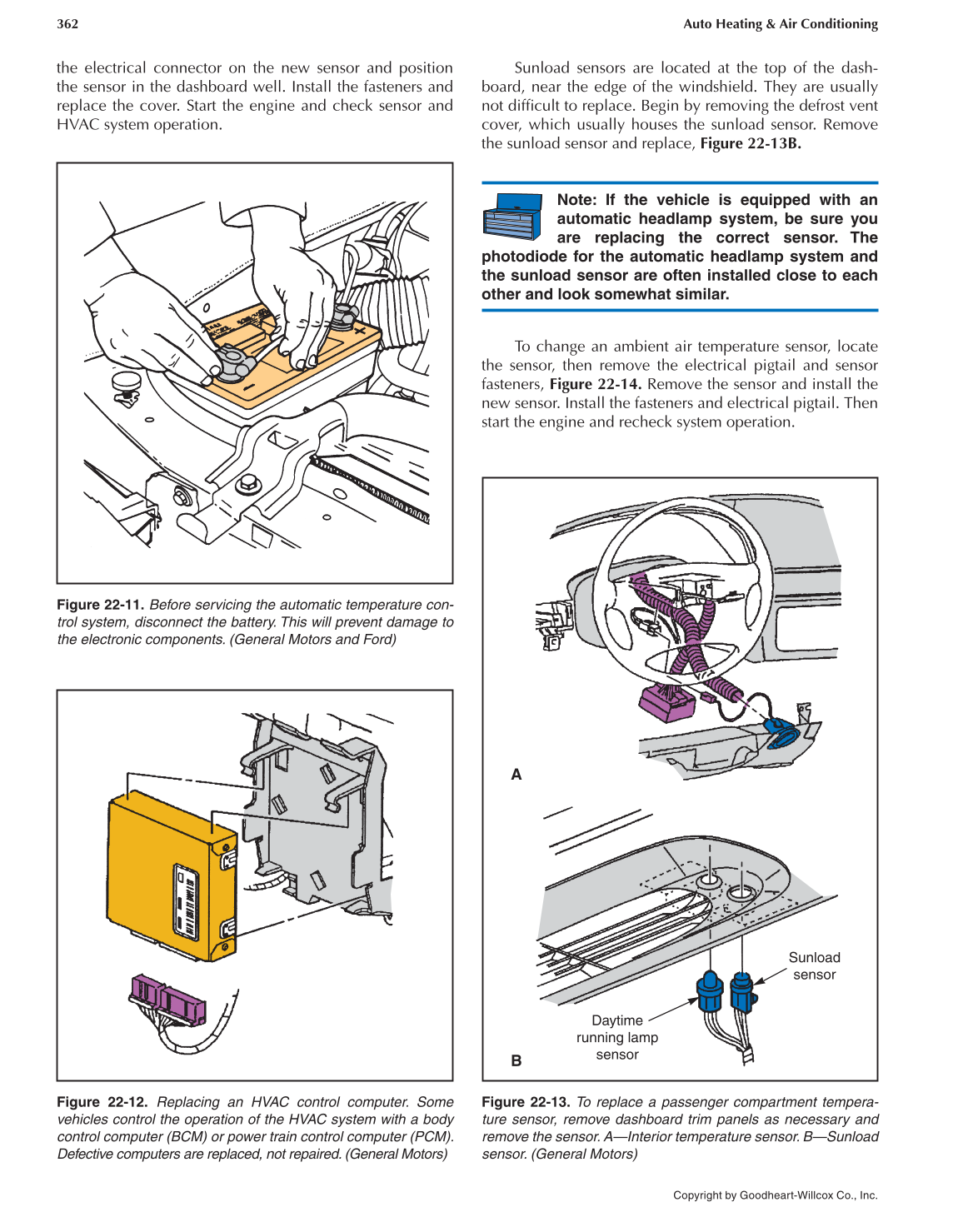362 Auto Heating & Air Conditioning
Copyright by Goodheart-Willcox Co., Inc.
the electrical connector on the new sensor and position
the sensor in the dashboard well. Install the fasteners and
replace the cover. Start the engine and check sensor and
HVAC system operation.
Sunload sensors are located at the top of the dash-
board, near the edge of the windshield. They are usually
not diffi cult to replace. Begin by removing the defrost vent
cover, which usually houses the sunload sensor. Remove
the sunload sensor and replace, Figure 22-13B.
Note: If the vehicle is equipped with an
automatic headlamp system, be sure you
are replacing the correct sensor. The
photodiode for the automatic headlamp system and
the sunload sensor are often installed close to each
other and look somewhat similar.
To change an ambient air temperature sensor, locate
the sensor, then remove the electrical pigtail and sensor
fasteners, Figure 22-14. Remove the sensor and install the
new sensor. Install the fasteners and electrical pigtail. Then
start the engine and recheck system operation.
Figure 22-11. Before servicing the automatic temperature con-
trol system, disconnect the battery. This will prevent damage to
the electronic components. (General Motors and Ford)
Figure 22-12. Replacing an HVAC control computer. Some
vehicles control the operation of the HVAC system with a body
control computer (BCM) or power train control computer (PCM).
Defective computers are replaced, not repaired. (General Motors)
Figure 22-13. To replace a passenger compartment tempera-
ture sensor, remove dashboard trim panels as necessary and
remove the sensor. A—Interior temperature sensor. B—Sunload
sensor. (General Motors)
Daytime
running lamp
sensor
Sunload
sensor
A
B
